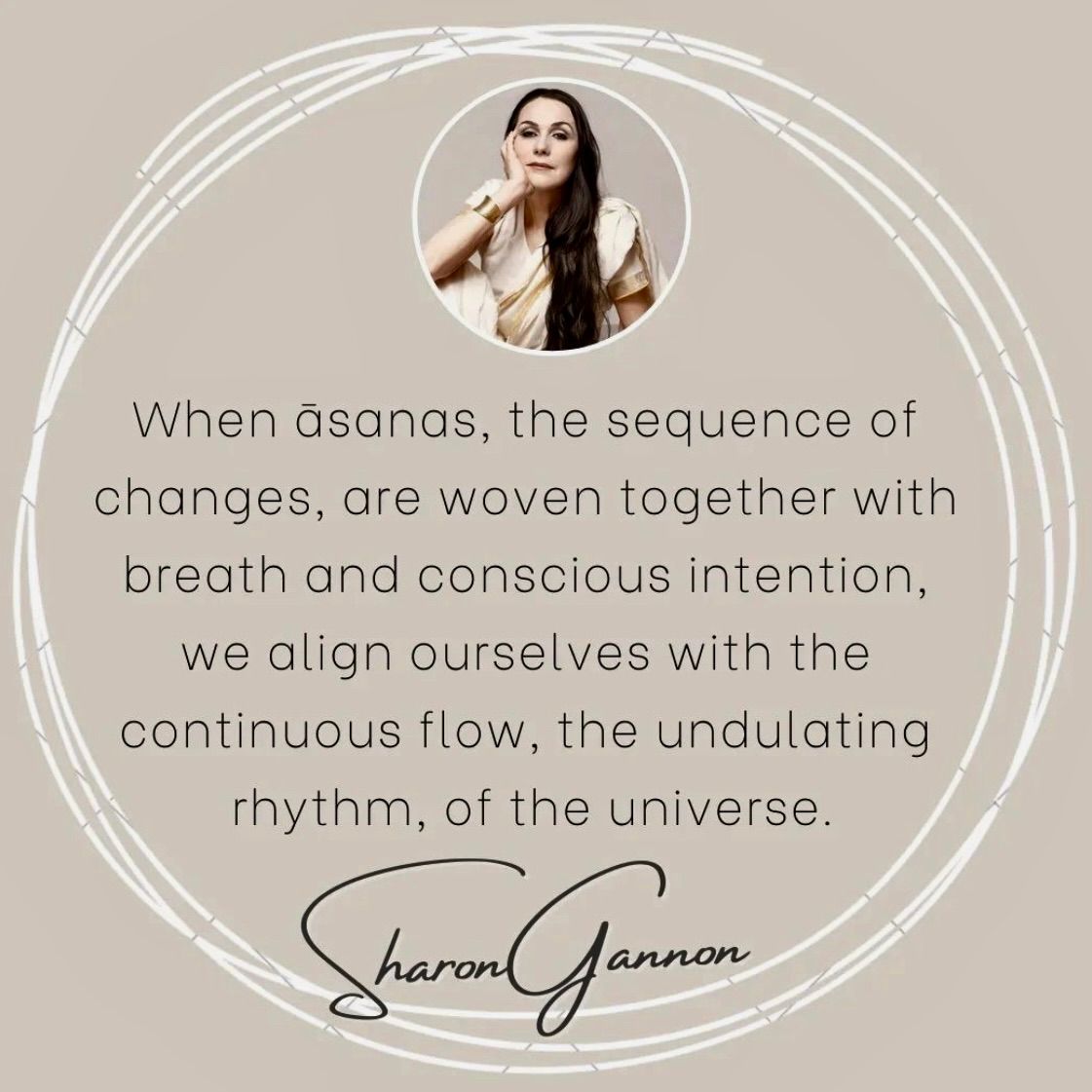
FOCUS JUNE 2025
“You need to get down to get up!” Sharon and David would often say. Those many hours of direct learning alongside other humans in different continents and across significant milestones of my life has formed a visceral cherished memory. I appreciate how our teachers always encourage us to look deeper, underneath the surface and outside the mainstream societal constructs; how they ask us to learn through relationship, our inter dependancy, interconnectivity, the ancestral innate knowledge of belonging on this Earth. As a species gifted with imagination, awareness, consciousness, compassion and wisdom we have the power to build from the ground up. The ability to dig out weeds and compost rot that might be contaminating the soil and replace it with seeds of compassion, forgiveness and love. They are asking us to get to the root, to be radical and generous, stretch; go deep. This attentional direction applies not only to urdhva dhanurasana, sirsasana, tadasana, but also to situations in life where we would be best served by learning from the earth, the decay and fecundity, the roots and mycelium. Can we stand in the spirit of reciprocity, receiving and giving back as we stand like a mountain or a tree, as we breathe in and as we breathe out? The experience of the extraordinary through the ordinary, a falling apart and coming back together is present in each moment if we are only able to notice it. As we learn to mine gold from our hardships; we can catalyse our pain into empathy and begin seeing ourselves in others and others as us. To quote Sharon Gannon, “when otherness dissolves then there is Yoga.”
Don’t just stand there but reach down through feet, hands, shoulders, head (whatever is in contact with the earth) to form a seal – that will provide stability and strength in the architecture of both body and mind. This invites a whole heartedness to the action of asana or any relationship that one is in the process of nurturing and refining. We can avoid skimming the surface or trying to float for a few seconds in a spectacular ‘pose’ and instead through practice become sturdy and remain centred in the challenging act of balance. We can hold ourselves and others upright through difficult times. We can find the teachings in the fall as well. Yoga asks of us to plug into the life that is already around us, to be here now. To forgo escaping from struggle and suffering and instead to experience the fire; use the lifting element of heat to raise ourself out of overwhelm and contraction; from worry to trust, from anger to forgiveness, victimhood to sovereignty. Stepping out of a scarcity mentality into one of abundance and gratitude. It begins with us.
This is a practice of cultivating mutually beneficial relationships, where we are not taking more than we need and simultaneously giving back where we can. The world around us is continuously becoming and unbecoming; rivers into ocean, ocean into clouds, cloud into teacups, expanding and contracting, pulsing, vibrating, solidifying. Each comprised of the other. It has to inter-be, it has to coexist with all the others. The occurrence of a connection makes energy potent and creative; where ida and pingala (lunar and solar channels) nadis intersect, when our hands join in front of our hearts or when matter meets spirit. When we experience this unification of mind and heart, body and breath the differences or the dance between the opposites can provide insight into non separateness of the different aspects. The opposites depend on each other for their existence. During chanting, meditation or yoga asana the practitioner experiences something greater than themselves; a vastness of heart and mind, a remembrance of their divinity, a connection to an infinitude from which they were never separate to begin with. Ultimately Source and seer becoming one. Yoga teaches us how to connect to and strengthen our physical and spiritual core so that when life drags us in opposite directions to make decisions or overcome hardships we are able to zoom in and zoom out, to our humanity and our divinity, our resilience and creativity.
Polarity is “the state of having or expressing two directly opposite tendencies, opinions, etc”(Collins dictionary) and it is present in Nature and all of Life. Humans have ecstasy and agony, contraction and expansion encoded within their organism. Cries and squeals of delight and discomfort are the first means of communication between infant and mother. This primal communication ensures the infant’s survival. As humans we hold the polarities of beauty and brutality, our thoughts and actions are either driven by Love or fear. In natures’ abundance and diversity I’ve discovered that no two blackberries from the same bush are exactly the same. It is their varying texture and subtle difference in taste that makes each one exquisite, interesting and real. The awesome machinery of Nature is diverse and boundless. Humans are the same. Creativity and genius doesn’t come from sameness. Being different, unique, authentic, is our superpower. Differences may confuse individuals and societies but the contrasts also stimulate expansion, imagination, creativity, action and change. Patanjali’s advice is practical and universal: “when the mind is disturbed” when you are confronted by the disturbances, anxieties, destructive patterns of being human, “contemplate on the opposite”, a different perspective, your capacity to channel the infinite, abundant universal Love that is also present in the experience of being alive. To consider the possibilities, opportunities and alternatives instead of the limitations. As Master Thich Nhat Hanh reminds us, “One speck of dust can be the Kingdom of God, the Pure Land.”
